
Review of Environmental Factors (REF)
A REF (review of environmental factors) is a document prepared by a consultant and submitted to the relevant consent authority.
New Generation Boarding House
We help our clients achieve their development dreams
Find out how we can help you
Housing affordability especially in high price and population growth suburbs like Sydney’s Inner City and Inner West has become a serious and growing problem. This in turn has prompted our local, state and federal governments to bring changes to planning and development laws allowing private investors and non-for-profit housing organizations the opportunity for developing “modern micro apartments” or what is now known as new generation boarding house development.
Introduced on 31 July 2009, the state government’s affordable housing provisions (AHSEPP) included incentives that permitted a developer to build and lease smaller, and therefore cheaper micro apartments in buildings of a larger scale than otherwise permitted in low-density areas and the concept of new age boarding houses had risen.
These new generation boarding houses offer self-contained furnished studios from 12m²-25m² with all utilities included in the rent or occupancy fee to people like young professionals, middle-aged people, divorcees and retired people who are squeezed out of the housing market because of the affordability gap between home ownership and their incomes.
One such example is Annandale’s McCarthy Maisonettes on Parramatta Road, which was approved by Leichhardt Council as a registered boarding house with 24 self-contained rooms in 2012. This completed building offers modern architect designed luxury furnished studio apartments from $355 a week all utility expenses included.
A growing section of Australia’s population don’t live in nuclear families, and the housing stock is shifting alongside this. High-density built forms are part of this shift. But there is need for more diverse choices for people who want to continue to enjoy the amenity of suburban neighbourhoods and keep their existing social networks there. These people aren’t looking for family houses and often can’t afford them. It is not in the interests of the landlord or tenant to see the neighborhood’s character tarnished, nor to have a business model that relies on a diminishing pool of prospective tenants.
There are often community concerns about anti-social behavior with boarding house developments, however this is mainly an issue of the perception of the traditional boarding house occupants who are coming from very low socia economic backgrounds and at times have physical or mental impairment that can lead to substance abuse. However, research conducted into boarding houses both established and new and operators/owners of these types of accommodation has indicated very low issues among tenants living inside these communities and having very little impact on surrounding neighbors “quiet and peaceful enjoyment of their premises”.
New generation boarding house developments are a very different product. The rooms are typically self-contained with kitchenette and ensuite. They are ecofriendly built, come with Wi-Fi and other state of the art design and interiors. They are now also subject to formal occupancy agreements that offer tenants (and landlords) more security and certainty. Residential Tenancy Agreements can also be signed and is the preferred choice for property investors adding to a better layer of protection, larger bonds and in the case of tenancy breaches more clarity around what action can be taken. Standard agreements are usually 6-12 months in length, rather than short term (3-6 months) and are generally renewed by the occupants if both landlord and tenant are happy with the tenure. Occupancy rates are very high, usually well over 90 per cent.
According to Australian Bureau of Statistics data, NSW now accommodates more than a third of all boarding house residents in Australia, strongly concentrated within the City of Sydney and surrounding inner-city locations. Traditionally banks have provided loans to individuals for a property on individual land. More recently lending has gone to developers as a construction loan, which is then paid back through the sale of individual units. The difference with boarding houses, compared to a typical apartment complex investment, is that the boarding house is being built as a business, rather than as property to be on-sold for capital gain. The attraction with boarding houses is the long-term return from rent that can be commanded, which is in the 8-9 per cent net rental return compared with the typical rental housing return of 3-4 per cent. New gen boarding houses are attracting a lot of interest, including those mum and dads running self-managed super funds.
One of the big questions that property investors will face is how and who is going to manage these tenancies and the general day to day operations of a multi-studio room development? Many property managers will simply refuse to deal with multiple occupancy properties, and those that do will charge up to double and a half of the average for the area the property is in. Again there is usually double the workload involved in managing multi room tenancies. As a result, some landlords who operate multiple occupancy properties may end up managing the properties themselves. This brings with it all the downsides that come with DIY property management, such as having to source and interview tenants, deal with day-to-day tenant management, attend to maintenance and implement rent increases and lease renewals.
There can be conflicts of personality in the processes and keeping at arm’s length is not such a bad thing. But a general real estate property manager is not always the answer as this type of management requires great technical skill and knowledge. Appointing a very qualified property manager is possible but there is a limited pool of these as new gen boarding houses are relatively a new dwelling type and limited in numbers. A ‘caretaker’ can be appointed to live onsite (usually a requirement as part of a D.A. for 20+ rooms), at a lower rent and can undertake basic grounds keeping, cleaning and minor maintenance. It’s a good solution as it means you’ve got someone on hand in the property to look after the basics however you’ve still got to deal with the overall property and tenancy management as well as the financial management and reporting that a caretaker will simply not be able to deliver.
There are estimated to be nearly 800 DAs for boarding houses currently under consideration at various councils within NSW. The old boarding houses used as half way houses for so called “society drop-outs” with shared services but these new gen types are a complete opposite which are a good alternative to a share accommodation premises and offers privacy and safety to the occupant. Savvy investors are buying or developing them for their high yield and low risk and developers often like to hold on to them for the annuity.
We have been on all sides of the boarding house fence, the Council Officer, the private planner for the developer and the private planner for the objector. In particual we have had extensive experience in boarding houses on the Northern Beaches of Sydney and in the established areas of Sydney. We have also had experience with boarding houses in non-suburban areas of NSW including Newcastle, Forster, Byron Bay and more. We know the ins and outs of the boarding house legislations and can help steer you through the difficulties with the interpretation and application of the legislation.
Please contact us whether you are a developer or an objector as we can help you with your planning matter.
Our Blogs

A REF (review of environmental factors) is a document prepared by a consultant and submitted to the relevant consent authority.

We look at the the ins and outs of obtaining an approval for Sex Services (Brothel) within NSW and what you need to consider with a site and application.

We look at the processing time for statement of environmental effects and the process we take!

The statement of environmental effects is a document that most people are confused by. We offer advice on how to write a good quality statement of environmental effects!
We now offer template statement of environmental effects for development applications so you can fill out your own report based on your development. Buy our template statement of environmental effects report.

Building Designers! Outsource your statement of environmental effects to Outlook Planning and Development and save time and money! Let us deal with the report so you can focus on the plans!
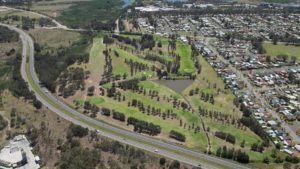
Beresfield is one of the biggest hot spots within the Newcastle area with investors and first home buyers flocking to the area to score great prices for great blocks of land. We look at what to look for for development within the area and how to maximise on your investments including dual occupancies and subdivisions.
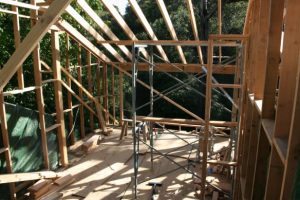
Unapproved works is one of our most common jobs for Outlook Planning and Development. Read our article on what to do and how to deal with the scary letters from Council!

We explain what to consider when planning a rural subdivision and the various costs and reports associated.

Thornton and Chisholm has become a booming area for investors and first home buyers wanting to leave Sydney and head towards the Hunter Valley. The greater Maitland area is a booming area with plenty of land available for developers.
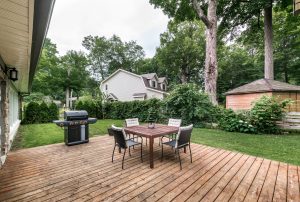
We explain what types of development you can do without any Council approval for everyone doing their home renovations. Read all about exempt development and what you can build this weekend after a trip to Bunnings to get your DIY tools.

Want to build a house or renovate but don’t want the hassle of a development application. You might be able to get approval through a private certifier. We take some time to explain what a complying development is and the steps you need to take to obtain a CDC through a private certifier.
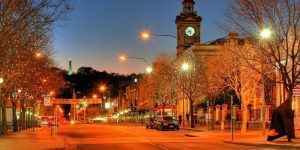
Heritage Impact Statements are essential for any development involving a heritage item or heritage conservation area. We go into some of the basics of what makes up a heritage impact statement and who should be preparing them for your development.
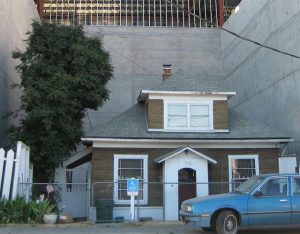
Council Das can cause a lot of stress! Have you received a notification in the mail about a development application and want to write a submission. We outline some steps to help you prepare a development application objection letter.

The first concept designs for Western Sydney Airport Terminal have been unveiled.
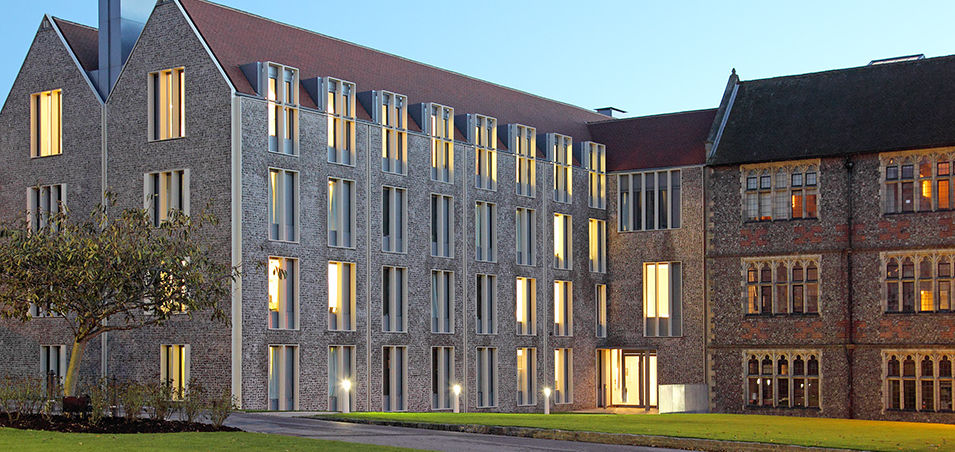
New generation boarding houses have a lot of negativity at the moment with developers obtaining approvals for large scale boarding house developments. So what exactly is a new generation boarding house?
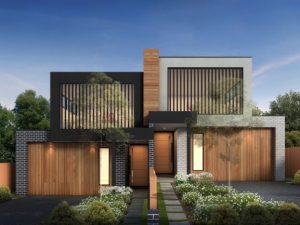
Northern Beaches Town Planners explain Dual occupancy facts on the Northern Beaches including Pittwater, Warringah and Manly. We provide some information on dual occupancy developments on the Northern Beaches of Sydney. Where you should be looking and what you should be considering.

We explore the theory that as the amount of parking decreases, the appeal of driving gives way to more environmentally friendly transport modes such as walking, cycling, ride-hailing, car pooling and public transport.
Some evidence suggests reducing or capping parking pays off. In cities that have implemented these measures, driving has declined and public transport use has increased.

The redevelopment of the Sydney Football Stadium has been full of controversy with a massive public backlash to the development.
The development has been subject to a lot of public debate with questions as to why the NSW Government are demolishing a functioning stadium instead of upgrading the stadium at a fraction of the cost.
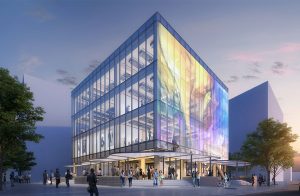
The University of Newcastle has recently submitted a seven building masterplan to the NSW Government for their new education precinct for Honeysuckle in Newcastle.
This must be submitted with your development application to all Councils!
A Statement of Environmental Effects (SEE) is a written report required under the Environmental and Assessment Act 1979 that outlines the likely environmental impacts of a development application and must be submitted with your development application to council.
A Statement of Environmental Effects details:
The statement of environmental effects must address the relevant legislation such as the Act, Regulations, State Environmental Planning Policies, Local environmental plans and development control plans!
Council development planners are require by legislation to consider the general public for all development applications! This often means they notify the application to neighbouring residents to seek comment!
The community regularly turns to Outlook Planning and Development for their objection letters as we are one of the most prominent Consulting firms that regularly submit development objection letters for all NSW Councils.
Our Principal Planner obtained the nickname “Objection King” from his customers throughout his career and can assist you with your Council development objection letter!
Contact us to learn more about our process and how we can assist with your development objection letter!

A REF (review of environmental factors) is a document prepared by a consultant and submitted to the relevant consent authority.

We look at the the ins and outs of obtaining an approval for Sex Services (Brothel) within NSW and what you need to consider with a site and application.

The statement of environmental effects is a document that most people are confused by. We offer advice on how to write a good quality statement of environmental effects!
We now offer template statement of environmental effects for development applications so you can fill out your own report based on your development. Buy our template statement of environmental effects report.

Building Designers! Outsource your statement of environmental effects to Outlook Planning and Development and save time and money! Let us deal with the report so you can focus on the plans!

Beresfield is one of the biggest hot spots within the Newcastle area with investors and first home buyers flocking to the area to score great prices for great blocks of land. We look at what to look for for development within the area and how to maximise on your investments including dual occupancies and subdivisions.

Unapproved works is one of our most common jobs for Outlook Planning and Development. Read our article on what to do and how to deal with the scary letters from Council!

We explain what to consider when planning a rural subdivision and the various costs and reports associated.

Thornton and Chisholm has become a booming area for investors and first home buyers wanting to leave Sydney and head towards the Hunter Valley. The greater Maitland area is a booming area with plenty of land available for developers.

We explain what types of development you can do without any Council approval for everyone doing their home renovations. Read all about exempt development and what you can build this weekend after a trip to Bunnings to get your DIY tools.

Want to build a house or renovate but don’t want the hassle of a development application. You might be able to get approval through a private certifier. We take some time to explain what a complying development is and the steps you need to take to obtain a CDC through a private certifier.

Heritage Impact Statements are essential for any development involving a heritage item or heritage conservation area. We go into some of the basics of what makes up a heritage impact statement and who should be preparing them for your development.

Council Das can cause a lot of stress! Have you received a notification in the mail about a development application and want to write a submission. We outline some steps to help you prepare a development application objection letter.

The first concept designs for Western Sydney Airport Terminal have been unveiled.

New generation boarding houses have a lot of negativity at the moment with developers obtaining approvals for large scale boarding house developments. So what exactly is a new generation boarding house?

Northern Beaches Town Planners explain Dual occupancy facts on the Northern Beaches including Pittwater, Warringah and Manly. We provide some information on dual occupancy developments on the Northern Beaches of Sydney. Where you should be looking and what you should be considering.

We explore the theory that as the amount of parking decreases, the appeal of driving gives way to more environmentally friendly transport modes such as walking, cycling, ride-hailing, car pooling and public transport.
Some evidence suggests reducing or capping parking pays off. In cities that have implemented these measures, driving has declined and public transport use has increased.

The redevelopment of the Sydney Football Stadium has been full of controversy with a massive public backlash to the development.
The development has been subject to a lot of public debate with questions as to why the NSW Government are demolishing a functioning stadium instead of upgrading the stadium at a fraction of the cost.

The University of Newcastle has recently submitted a seven building masterplan to the NSW Government for their new education precinct for Honeysuckle in Newcastle.
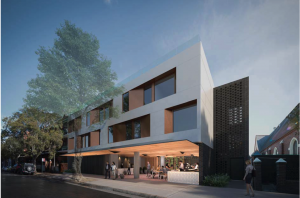
Outlook Planning and Development were engaged by a group of concerned residents in regards to a nearby development that sought consent to demolish an existing (abandoned) service station to a boutique hotel with 58 guest rooms, car lift and guest facilities.
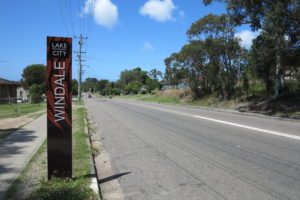
A change of land zoning proposed by Lake Macquarie council would open the door for medium-density housing in a large part of Windale.
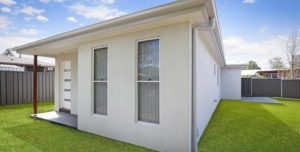
Granny flats, or secondary dwellings as they are known as in the Planning world, can allow home owners to keep parents or adult children close by while giving them their own space. They can also be a great way to generate additional rental income.

Newcastle and the Hunter Valley has become a hot spot for developers as well as residents of Sydney looking for a tree change and a work life balance. There is so much development potential and lots of great properties within the area for a fraction of the price of Sydney.
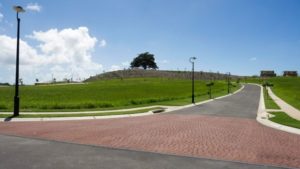
We look at the five things to consider before buying a block of land! Is it better to buy established or purchase a vacant lot and building?

We look at the processing time for statement of environmental effects and the process we take!
Boarding Houses
Complying Development Audits
Dual Occupancies
Development Objection Letters
Development Applications
Development Feasibility Report
Pre Purchase Planning Reports
Rezoning Applications
Heritage Impact Statements
Statement of Environmental Effects
Rural Dwelling Applications
Clause 4.6 Reports
Waste Management Plans
Safer By Design Assessments
Change of Use Applications
Sydney Areas
Town Planning – Campbelltown
Town Planning – Eastern Suburbs
Town Planning – Central Coast
Town Planning – Hornsby
Town Planning – Ku-ring-gai
Town Planning – Inner West
Town Planning – Northern Beaches
Town Planning – North Shore
Town Planning – Northern Suburbs
Town Planning – Parramatta
Town Planning – Southern Suburbs
Town Planning – South West
Town Planning – Sydney
Town Planning – Western Suburbs
Town Planning – Wollongong
Newcastle – Hunter Valley
Town Planning – Newcastle
Town Planning – Maitland
Town Planning – Cessnock
Town Planning – Singleton
Town Planning – Dungog
Town Planning – Lake Macquarie
Town Planning – Port Stephens
Regional NSW
Town Planning –Mid North Coast
Town Planning – Ballina
Town Planning – Byron Bay
Town Planning – Wagga Wagga
Town Planning – Tweed
Town Planning – Dubbo
Town Planning – Parkes
Town Planning – Armidale
Town Planning – Tamworth
Town Planning – Coffs Harbour
Town Planning – Snowy Mountains
Town Planning – Yass
Sydney Areas
Development Application – Campbelltown
Development Application – Eastern Suburbs
Development Application – Central Coast
Development Application – Hornsby
Development Application – Ku-ring-gai
Development Application – Inner West
Development Application – Northern Beaches
Development Application – North Shore
Development Application – Northern Suburbs
Development Application – Parramatta
Development Application – Southern Suburbs
Development Application – South West
Development Application – Sydney
Development Application – Western Suburbs
Development Application – Wollongong
Newcastle – Hunter Valley
Development Application – Newcastle
Development Application – Maitland
Development Application – Cessnock
Development Application – Singleton
Development Application – Dungog
Development Application – Lake Macquarie
Development Application – Port Stephens
Regional NSW
Development Application –Mid North Coast
Development Application – Ballina
Development Application – Byron Bay
Development Application – Wagga Wagga
Development Application – Tweed
Development Application – Dubbo
Development Application – Parkes
Development Application – Armidale
Development Application – Tamworth
Development Application – Coffs Harbour
Development Application – Snowy Mountains
Development Application – Yass
Sydney Areas
DA Objection – Campbelltown
DA Objection – Eastern Suburbs
DA Objection – Central Coast
DA Objection – Hornsby
DA Objection – Ku-ring-gai
DA Objection – Inner West
DA Objection – Northern Beaches
DA Objection – North Shore
DA Objection – Northern Suburbs
DA Objection – Parramatta
DA Objection – Southern Suburbs
DA Objection – South West
DA Objection – Sydney
DA Objection – Western Suburbs
DA Objection – Wollongong
Newcastle – Hunter Valley
DA Objection – Newcastle
DA Objection – Maitland
DA Objection – Cessnock
DA Objection – Singleton
DA Objection – Dungog
DA Objection – Lake Macquarie
DA Objection – Port Stephens
Regional NSW
DA Objection –Mid North Coast
DA Objection – Ballina
DA Objection – Byron Bay
DA Objection – Wagga Wagga
DA Objection – Tweed
DA Objection – Dubbo
DA Objection – Parkes
DA Objection – Armidale
DA Objection – Tamworth
DA Objection – Coffs Harbour
DA Objection – Snowy Mountains
DA Objection – Yass
Copyright © 2022 – Outlook Planning and Development